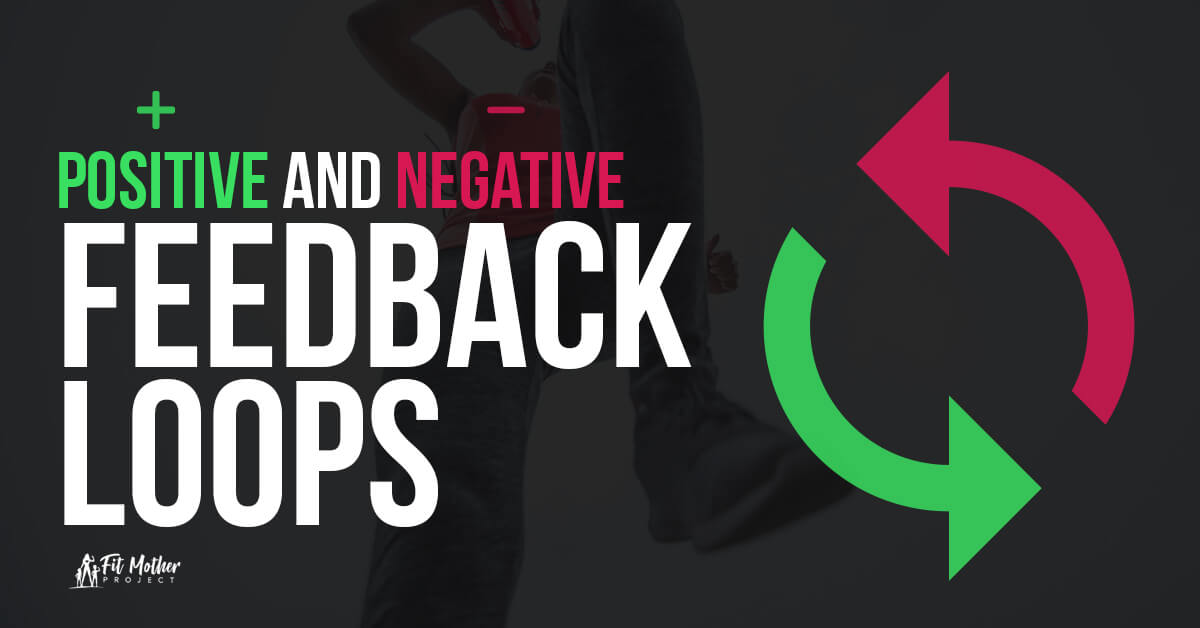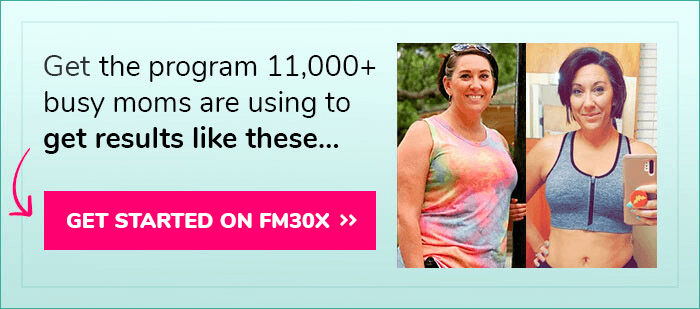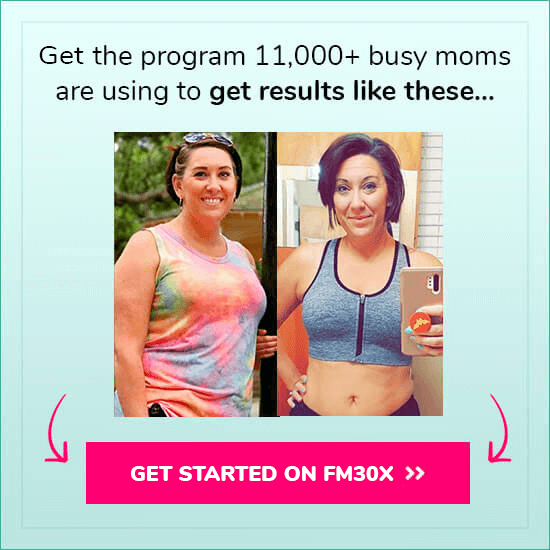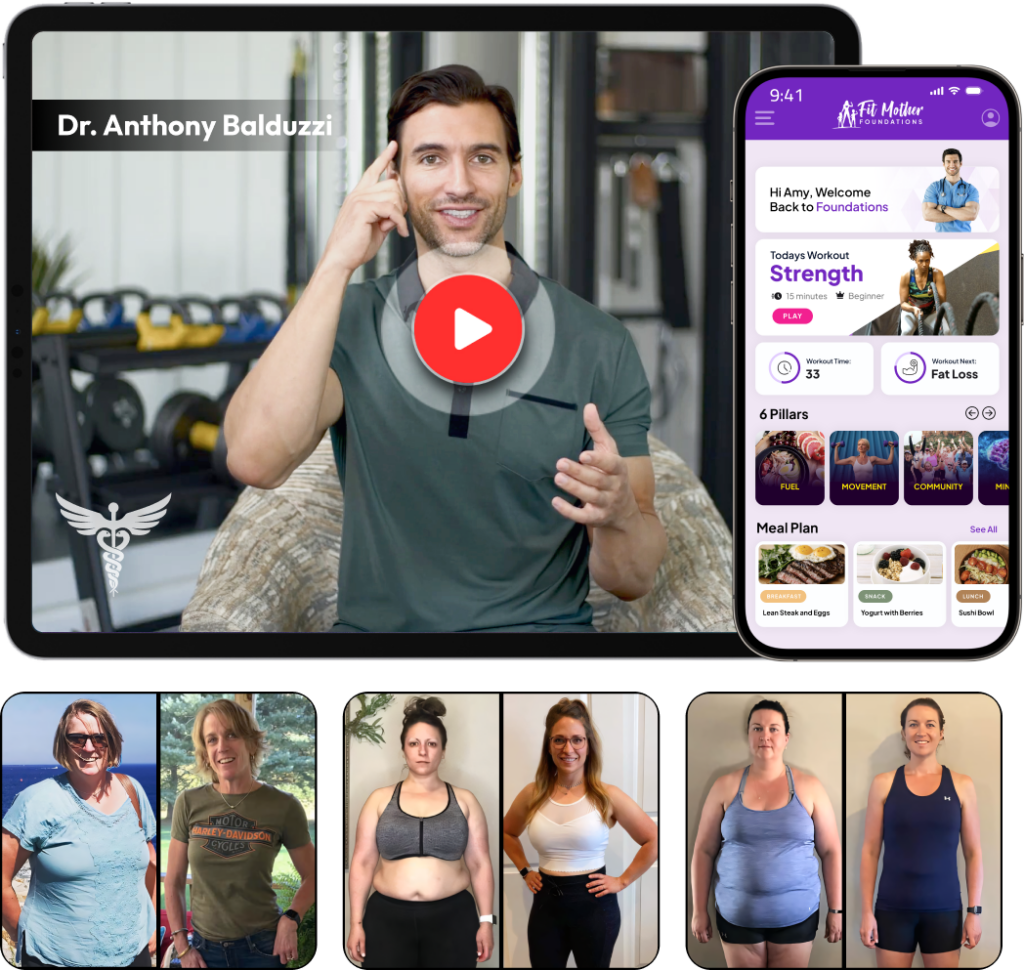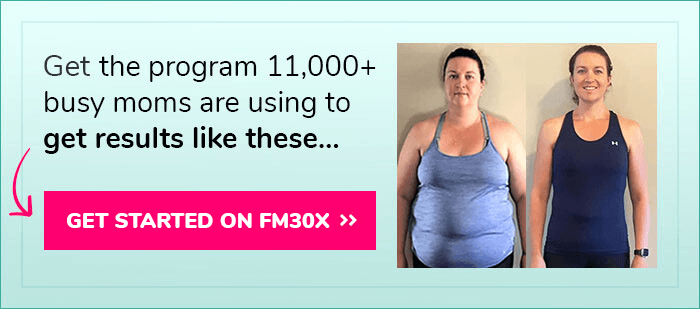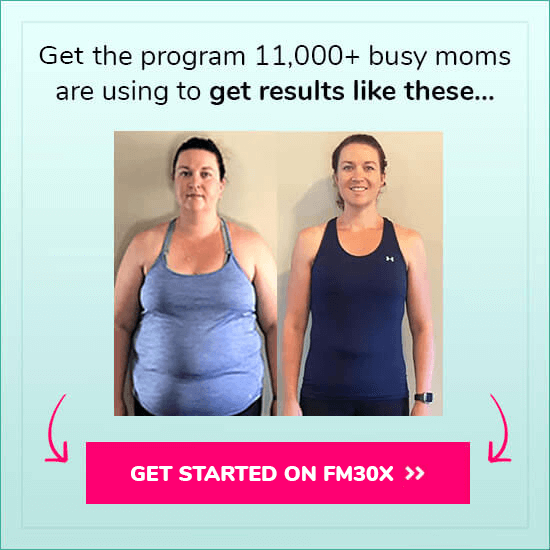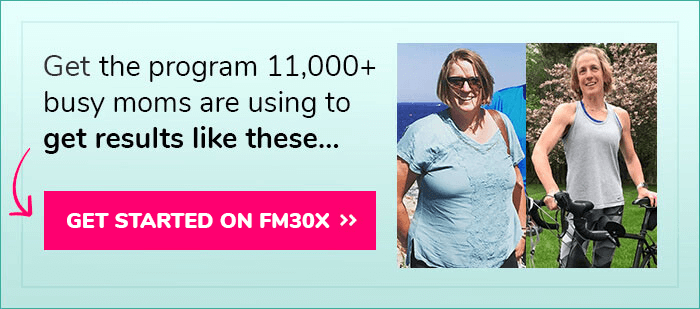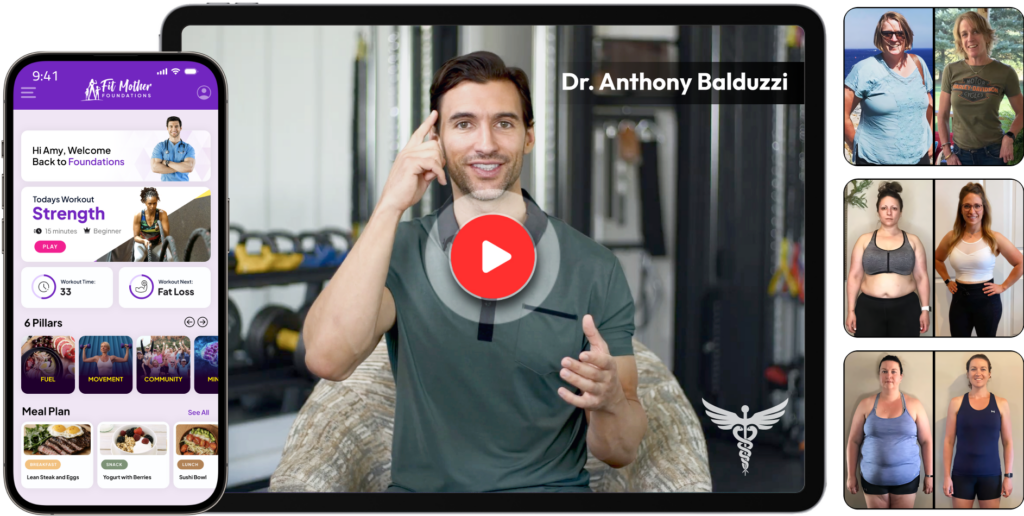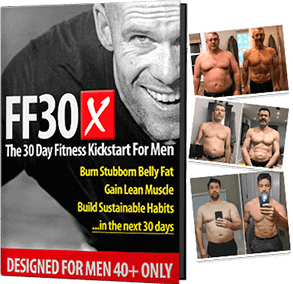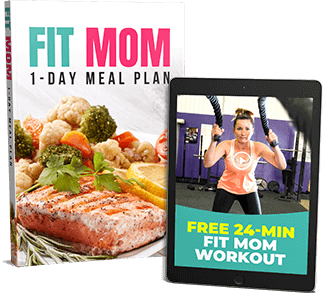Believe it or not, using positive and negative feedback loops for health and fitness helps you stay on track with nutritious eating, regular workouts, and other healthy habits long term.
But what exactly are positive and negative feedback loops when it comes to your health and well-being?
Consider the positive and negative feedback loops below to reinforce good behavior, measure fitness progress, reduce chronic disease risks, or stay on track with a weight loss program.
Doing so can give you the motivation needed for success!
Fitness is more than physical! Learn more about the mind-body connection.
In just 6-weeks on our FOUNDATIONS Program, you'll transform your health and body, for the rest of your life!Join our 6-Week Program...
You'll Gain Health for Life!
What Are Positive and Negative Feedback Loops?
Positive Feedback Loops
Positive feedback loops, or positive loops, can reinforce healthy lifestyle changes.
If you push a loop in a positive direction, it often accelerates in the same direction.
Positive feedback helps you get motivated to stay on track with habits that are good for your body and overall wellness.
Negative Feedback Loops
Negative feedback loops, otherwise known as negative loops, work to reverse the course of your current behavior.
Negative feedback can cause you to change current habits to get back on track after veering off course.
Don't worry if you have an off day or desire a “cheat day” every now and then.
Simply get back on track with healthy habits the next day!
Find out how to stay on track with your health and fitness goals by using feedback loops!
Examples of Positive and Negative Feedback Loops
Examples of positive and negative feedback loops you can incorporate into your daily, weekly, or monthly routine include:
Daily Weigh-ins
Studies show that weighing yourself every day is more effective than less frequent weigh-ins for weight loss and healthy weight management.
Use daily weigh-ins to track progress over time, whether your goal is weight loss, healthy weight maintenance, or even weight gain in some cases.
Record your weight every day and if your bodyweight moves in the wrong direction (depending on your weight-management goals), it's time to make diet, exercise, sleep, or other lifestyle changes.
The Way Your Clothes Fit
The way your clothes fit is a good indicator of your body's size, regardless of what the scale says.
Use clothes you feel healthy and confident about as a baseline.
Assess the way clothes fit on your body to determine if you're getting bigger, smaller, or staying the same size and shape.
For example, use your favorite pair of “skinny jeans” as a starting point.
If the jeans start to feel too tight or you can't get them zipped, make changes to your diet or exercise regimen as needed to avoid undesirable weight gain over time.
If your clothes are getting too loose but you haven't yet reached your goal weight, purchase smaller-sized clothes and get rid of the larger-sized items.
Make it a priority to avoid buying larger clothes.
Blood Pressure Readings
Checking your blood pressure regularly, or see a healthcare provider who can monitor it.
Doing so is a good indicator of your heart health and overall health and wellness.
Healthy blood pressure readings are those that measure less than 120/80 mm Hg.
If you have elevated blood pressure, make healthy lifestyle changes or ask your doctor if you're a candidate for blood pressure-lowering medicines.
To keep your blood pressure within a healthy range using lifestyle habits, consider the following:
- Weight loss
- Daily exercise
- Increased fruit and vegetable intake
- Reduced high-sodium foods
- Reduced processed foods
- Not smoking
- Limiting or avoiding alcohol
If you have a blood pressure monitoring device at home, use it on a regular basis to track your values.
If your reading is too high, check it again and make lifestyle changes as needed.
Check-in with your doctor regularly as well.
Looking for signs you're a healthy woman? Try these 7 health tests you can do at home!
Blood Sugar Checks
High blood sugar can indicate you have prediabetes or diabetes, which is why monitoring the sugar present in your blood is important if you have symptoms of diabetes, have been diagnosed with diabetes, or are at risk of this common chronic disease.
Undiagnosed or untreated diabetes can cause nerve, eye, heart, or kidney damage, as well as other serious medical problems.
Home blood sugar monitoring devices make it easy to check the levels of sugar in your blood.
Simply prick your finger and use a testing strip that comes with your device.
Generally speaking, blood sugar levels of 200 milligrams per deciliter or higher can mean you have diabetes.
Fasting blood sugar levels, which you can test after not eating anything after a full night's rest, that read less than 100 milligrams per deciliter are usually considered normal.
If you struggle with diabetes or prediabetes and want to reduce the risk of complications, there are several things you can do.
Lose weight if you're overweight and increase your intake of fruits, vegetables, whole grains, legumes, nuts, seeds, and other fiber-rich foods.
Limit or avoid alcohol, sweets, sodas, other sugary drinks, refined grains (white bread and white rice), fried foods, processed meats, and other highly processed foods.
Exercise at least 30 minutes most days of each week.
If your blood sugar is very high or doesn't go away with diet and exercise changes, your doctor may prescribe diabetes medications to get your levels under control.
You might use insulin injections if you have type 1 diabetes, in addition to regularly monitoring blood sugar and maintaining healthy habits.
Blood Cholesterol Monitoring
High blood cholesterol is common, and when left untreated it puts you at risk of heart attacks, strokes, and heart failure.
To measure your blood cholesterol, see a doctor or visit a lab where technicians take a sample of your blood and submit it for lab analysis.
As a rule, normal total blood cholesterol levels are 200 milligrams per deciliter or less.
To reduce high blood cholesterol naturally, lose weight if you're overweight, exercise regularly, don't smoke, and make dietary changes as needed.
Eat fiber-rich foods (plant-based foods), limit foods high in animal fat (saturated fat), and steer clear of refined grains, sodas, sweets, other foods high in added sugar, and highly processed foods.
Ask your doctor if taking a fiber supplement is right for you.
They may recommend you take cholester0l-lowering medicines if lifestyle changes haven't worked or your cholesterol reaches very high levels.
Triglyceride Assessments
Having high levels of triglycerides, which are fats, in your blood long-term increases your risk of a heart attack, stroke, and other heart problems.
Normal triglyceride levels are less than 150 milligrams per deciliter.
Your doctor uses a simple blood test to assess your triglyceride levels. Risk factors for developing the condition include overweight, obesity, poor dietary habits, lack of exercise, and other unhealthy habits.
To lower high triglycerides or your risk of developing this condition:
- Get regular exercise
- Reduce added sugar, white bread, and other refined grains
- Lose weight
- Limit or avoid alcohol
- Eat healthy fats found in olive oil, fatty fish, avocados, walnuts, and other plant-based foods
If your triglyceride levels remain high despite making lifestyle changes, your doctor might recommend you try triglyceride-lowering medicines, niacin, or fish oil supplements.
They let you know how often to see a medical professional to monitor triglyceride levels and ensure they stay within a normal, healthy range.
In just 6-weeks on our FOUNDATIONS Program, you'll transform your health and body, for the rest of your life!Join our 6-Week Program...
You'll Gain Health for Life!
Fluid Measurements and Urine Evaluations
Drinking enough water is more important than ever, as staying hydrated keeps energy levels high and maximizes athletic performance.
Drinking water before meals is a good way to control your calorie intake for weight loss or healthy weight management.
To make sure you drink enough water and other fluids, check your urine. It should be light yellow or clear in color.
If your pee is bright or dark yellow, it's time to increase your water intake.
Many women need about 12 cups of fluids per day, but your actual requirements vary based on your size, body composition, and the amount of water your body loses through sweating.
Weigh yourself before and after strenuous workouts.
If you weigh less immediately after exercise, chances are you need to drink more water before, during, and after you work out.
Speed and Distance Monitoring
Tracking your speed and distance is beneficial for numerous reasons.
It determines if you're getting into better shape, which can reduce your risk of diabetes, heart disease, obesity, and other chronic conditions.
It doesn't matter which type of cardiovascular workout you choose, whether it's walking, jogging, biking, swimming, rowing, stair climbing, or using an elliptical machine.
Stationary exercise equipment can track miles completed and miles per hour (the amount of time it takes you to complete a mile).
You can also use an app to track the distance you travel each day, which includes miles completed during exercise and activities of daily living.
Number of Reps and Amount of Weight Lifted
If you complete weightlifting as part of your regular fitness routine, which you should to maximize strength, overall wellness, and body composition, keep track of the amount of weight you can lift and the number of repetitions you complete during each set.
For example, track the amount of weight you're able to lift while doing squats, lunges, biceps curls, shoulder press, chest press, and more.
Keep track of how many reps you're able to complete too.
If you can comfortably do more than 20 reps of a weightlifting exercise (using proper form), slightly increase the amount of weight you lift as your body gets stronger.
Find out why strength training for women over 40 is important to combat muscle loss and promote longevity.
Body Mass Index (BMI) Evaluations
Tracking your body mass index (BMI) is a good indicator of your body weight, body fat, and chronic disease risk factors.
It's a simple way to use positive and negative feedback loops to adopt or maintain healthy habits.
To calculate your BMI, try an online BMI calculator or use the following formula:
- Multiply your body weight (in pounds) by 703.
- Divide that number by your height (in inches).
- Divide by that number by your height (in inches) one more time.
For example, if you're 5 feet 3 inches (63 inches) tall and weigh 140 pounds, your BMI is 24.8.
BMI classifications are as follows:
- Underweight = less than 18.5
- Normal weight = 18.5–24.9
- Overweight = 25–29.9
- Obesity = 30 or greater
Use your BMI as motivation to lose weight, maintain your weight, or even gain weight if need be.
Waist Circumference Measurements
Measuring your waist circumference is a good indicator of body fatness and chronic disease risk factors.
It helps with positive and negative feedback loops, motivating you to stay or get back on track with healthy habits.
Generally speaking, a healthy waist circumference is 35 inches or less for women and 40 inches or less for men.
You can evaluate your waist circumference by measuring the circumference (the area around) of the smallest part of your waist above your hip bones.
If your waist exceeds a healthy measurement, change up your daily habits:
- Eat more vegetables, fruits, other fiber-rich foods, lean proteins, and heart-healthy fats
- Drink water before meals
- Get at least 7 hours of sleep each night
- Limit or avoid alcohol
- Exercise daily
- Increase activities of daily living
- Reduce stress
For best fat-burning results, combine at least 30 minutes of aerobic exercise with strength training most days of the week.
Use Fit Mother Project workouts as a guide!
Arm, Thigh, and Hip Circumference Measurements
Another way to use positive and negative feedback loops is to assess your body composition, measuring the distance around the largest portion of your arms, thighs, and hips.
Once you reach a desirable body shape, you can still track these measurements to reduce the risk of unwelcome weight gain.
Use a journal to track weekly arm, thigh, and hip circumference measurements in addition to recording your body weight daily.
In just 6-weeks on our FOUNDATIONS Program, you'll transform your health and body, for the rest of your life!Join our 6-Week Program...
You'll Gain Health for Life!
Positive and Negative Feedback Loops: Getting Started
If you're looking for ways to continue (or start) healthy lifestyle habits to supplement positive and negative feedback loops for better health, consider joining the Fit Mother Project healthy eating program designed for busy moms of all ages!
When you sign up for the program, you receive custom healthy meal plans, fat-burning workouts, email coaching support from health experts, recipes, weekly newsletters, and much more.
You also have access to social support from thousands of other busy Fit Moms like you!
Continue using positive and negative feedback loops and try a Fit Mother Project free meal plan and workout to get started on the journey toward better health!
Erin Coleman is a registered and licensed dietitian with over 15 years of freelance writing experience. She graduated with her Bachelor of Science degree in nutritional science from the University of Wisconsin-Madison, and completed her dietetic internship at Viterbo University in La Crosse, Wisconsin. Prior to beginning her career in medical content writing, Erin worked as Health Educator for the University of Wisconsin-Madison Department of Internal Medicine. Her published work appears on hundreds of health and fitness websites, and she’s currently working on publishing her first book! Erin is a wife, and a Mom to two beautiful children.
Fit Mother Project is the answer you’ve been looking for. Inside the program, you’ll receive: Our Fit Mother 30X Program (FM30X) is the answer you’ve been looking for. Inside FM30X, you’ll receive: The FOUNDATIONS Program is created by Dr. Anthony Balduzzi for Women 40+ who want Lifelong Health. In just 6-Weeks following FOUNDATIONS, you'll experience: FOUNDATIONS has transformed 60,000 lives! Are you ready to experience true lasting health & results?If you’re a busy mom who wants to finally lose weight,
get healthy, and actually keep the pounds off for good,
this is the simple program you’ll love sticking to…
If you’re a busy mom who wants to finally lose weight,
get healthy, and actually keep the pounds off for good,
this is the simple program you’ll love sticking to…
LEARN MORE ABOUT FM30X »
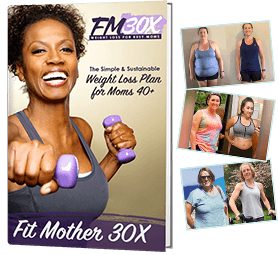
Learn More About FM30X

Join our 6-Week Doctor Designed Health Program.
You'll Gain Foundational Health for the Rest of Life.
*Please know that weight loss results & health changes/improvements vary from individual to individual; you may not achieve similar results. Always consult with your doctor before making health decisions. This is not medical advice – simply very well-researched info on positive and negative feedback loops.

